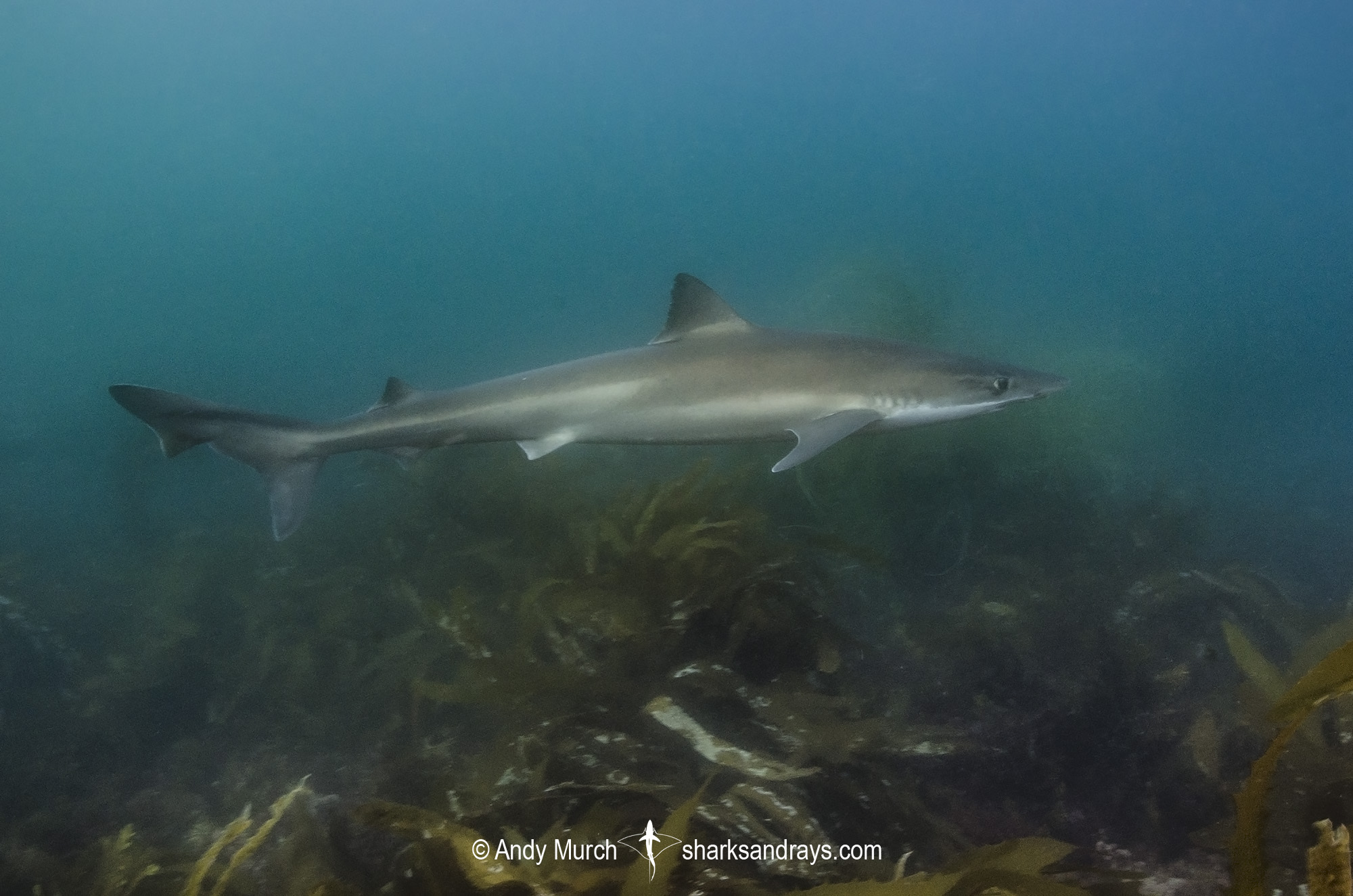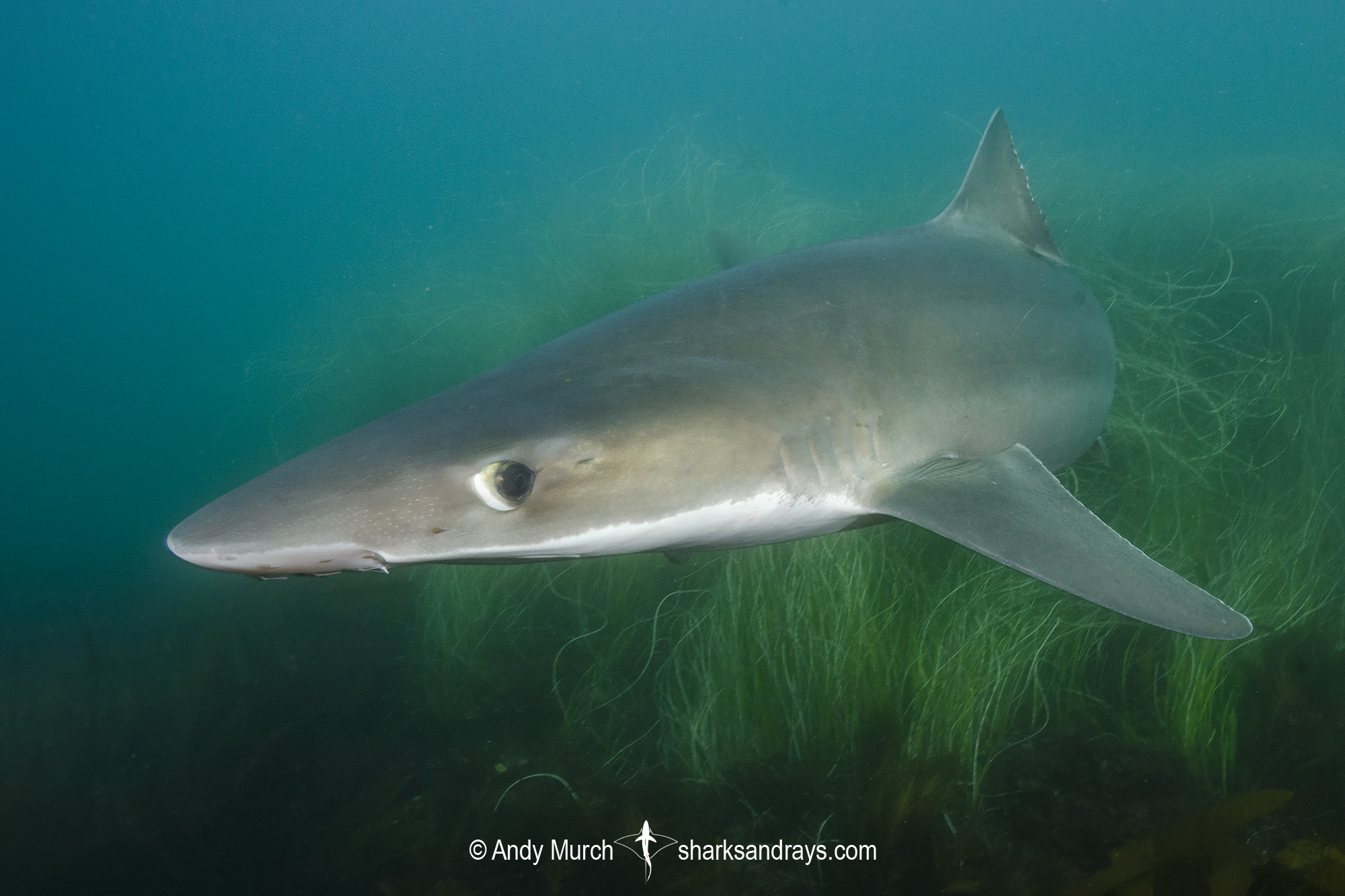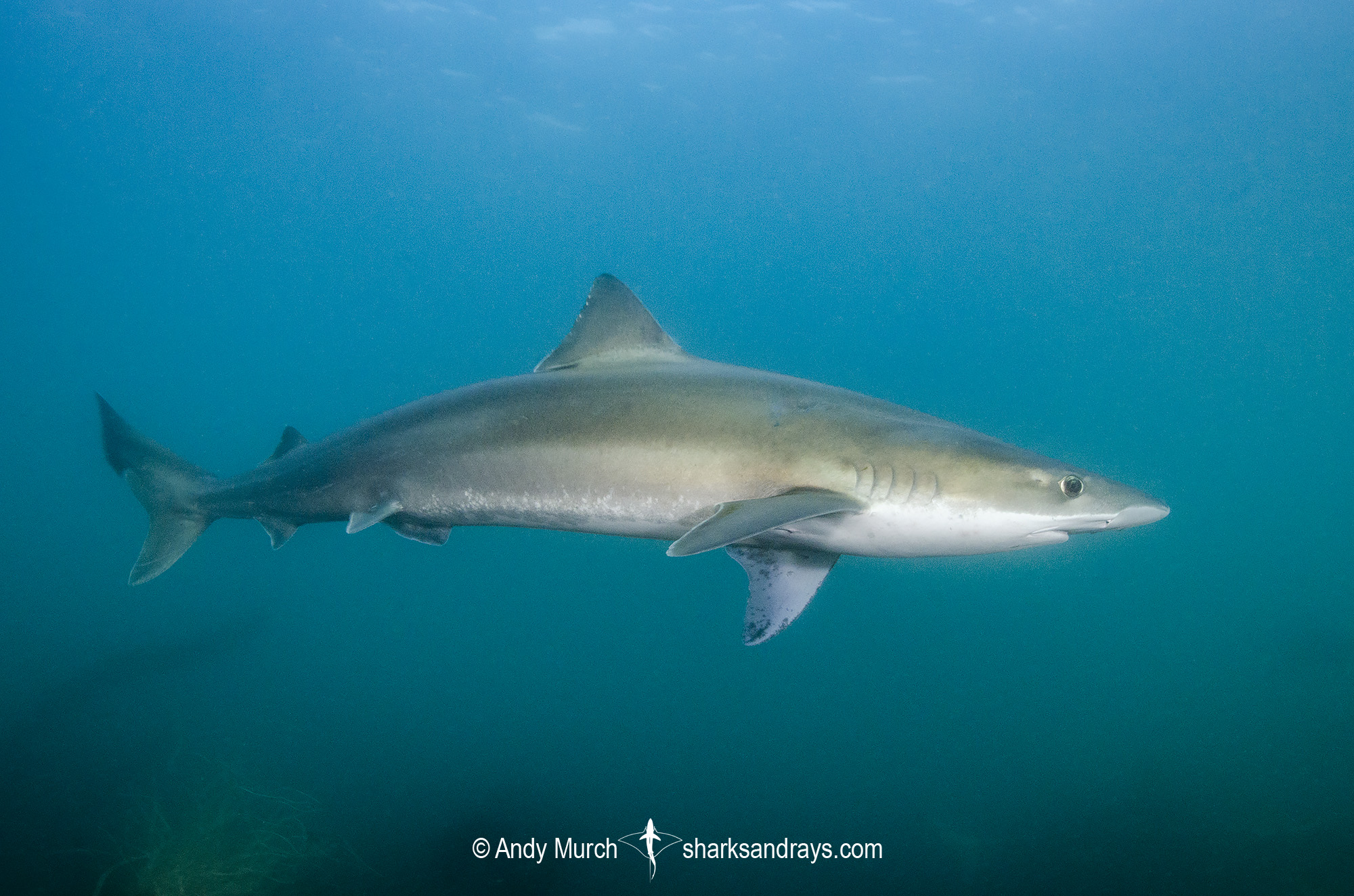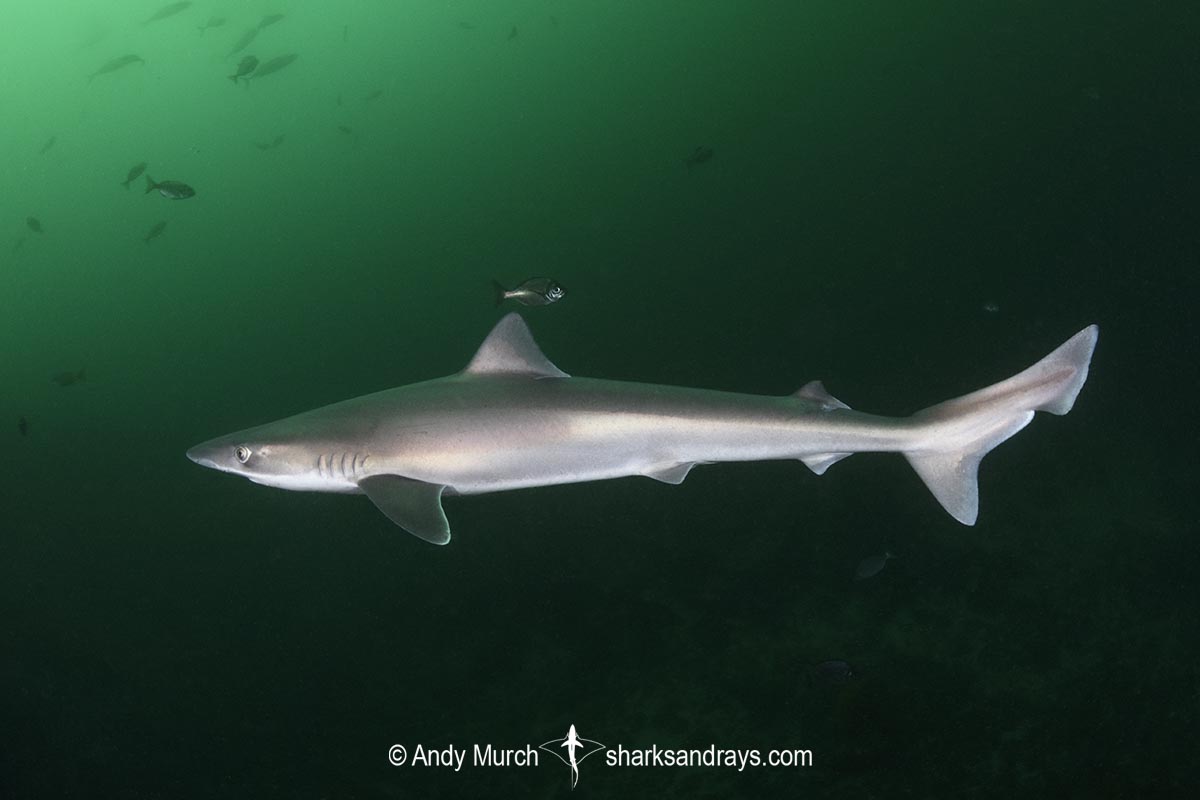Common names
Tope Shark, Soupfin Shark, School Shark.
Binomial
Galeorhinus galeus
Synonyms
Carcharhinus cyrano, Eugaleus galeus, Galeorhinus australis, Galeorhinus chilensis, Galeorhinus galeo, Galeorhinus vitaminicus, Galeorhinus zyopterus, Galeus australis, Galeus canis, Galeus chilensis, Galeus communis, Galeus linnei, Galeus molinae, Galeus nilssoni, Galeus vulgaris, Galeus zyopterus, Notogaleus australis, Notogaleus rhinophanes, Squalus galeus, Squalus rhinophanes.
Identification
Body fairly slender. Snout long and pointed. Upper labial furrows somewhat longer than lower. Small, visible spiracle behind eye. First dorsal fin origin posterior to pectoral fin free rear tip. Second dorsal fin origin opposite anal fin origin. Second dorsal fin small; same size as anal fin. Long, distinct, lower caudal lobe with a pointed tip. Very long terminal caudal lobe. Dorsal coloration grey-brown with bronzy hues. Fins somewhat dusky.
Size
Maximum length approximately 200cm. Size at birth 30-40cm.
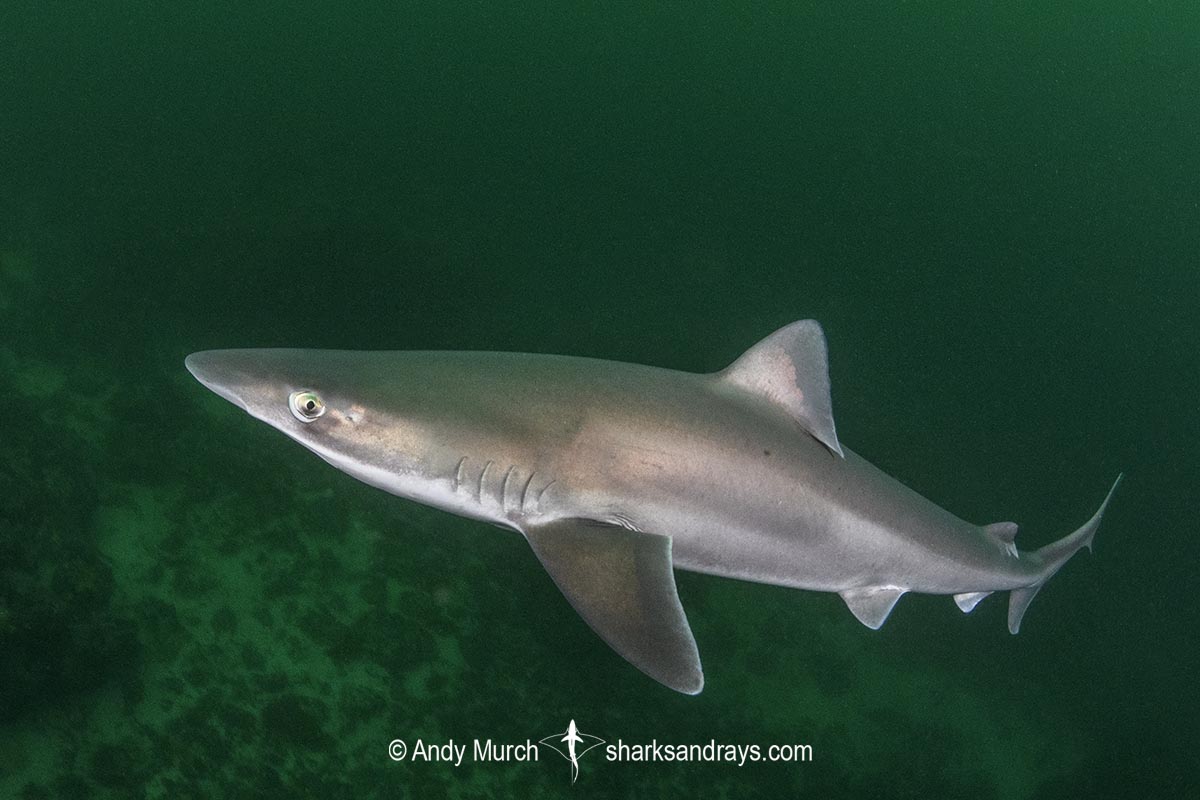
Conservation Status
CRITICALLY ENDANGERED
The tope shark is a late to mature species with a triennial reproductive cycle. It is targeted globally and a bycatch component of gillnet and longline fisheries, and trawl and hook-and-line fisheries. Where it is permitted, tope is commonly retained for its meat and fins.
In the Southwest Atlantic, southern Africa, and Australia, steep declines of up to 80% have been reported. In the Northeast Atlantic, a reduction of 76% over the past three generation lengths (79 years) has been recorded. The tope population in New Zealand stock has been reduced by 30–49%, whereas in the Northeast Pacific, a dramatic decline in the 1940s, has led to strict management measures resulting in an increase in abundance. In Australia and the Northeast Atlantic, the remaining populations appear to have stabilized.
Overall, the global population has undergone a reduction of 88% over the last three generations (79 years).
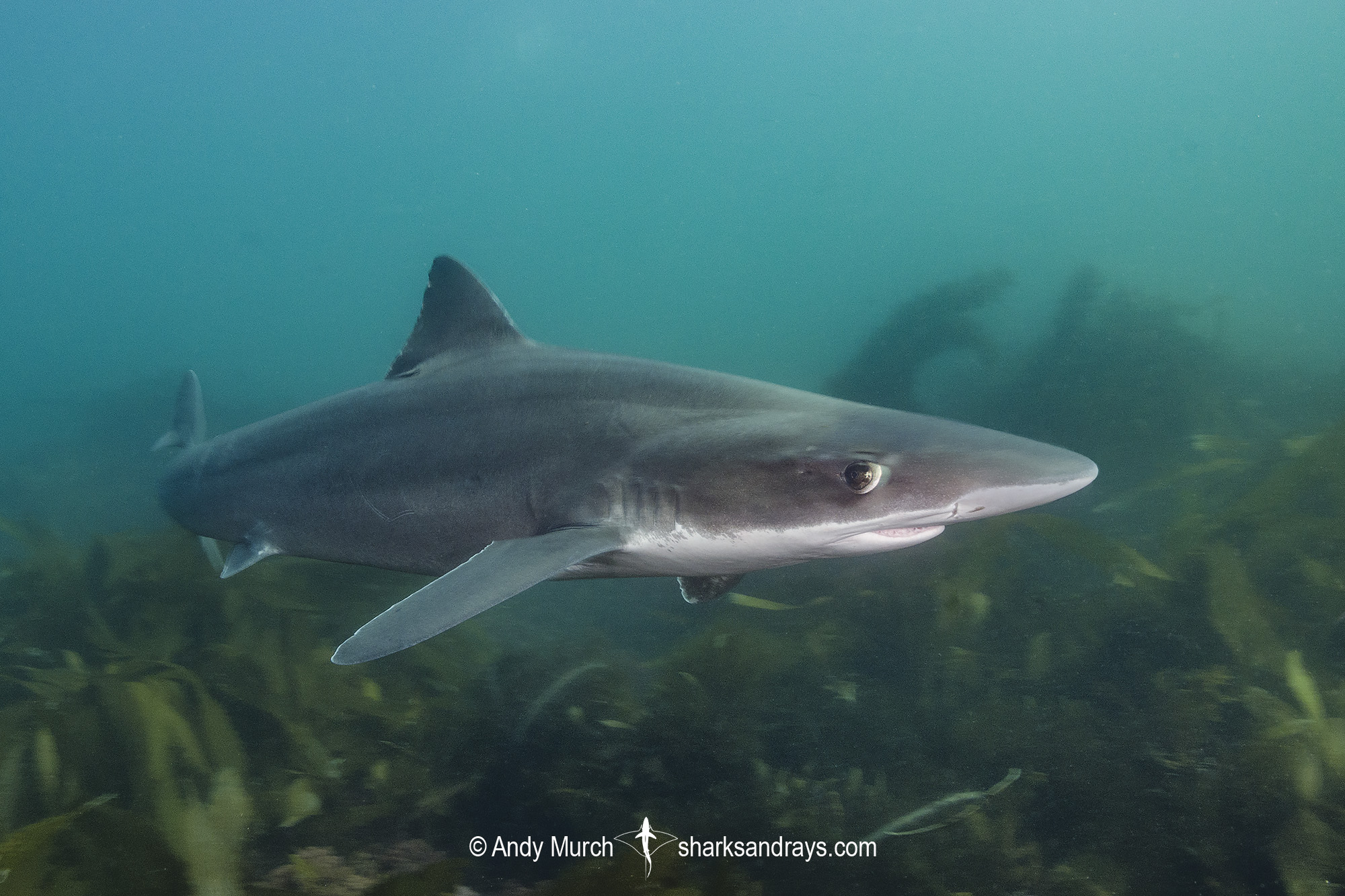
Habitat
A cold/warm temperate species present in shallow bays, continental shelves, and upper slopes. Recorded down to 823m but generally in depths less than 200m; often from the surface to 40m.
Distribution
Widely distributed along most temperate coastlines but absent from the northwest Atlantic and northwest Pacific. On the west coast of North America, it is found from northern British Columbia to the end of the Baja Peninsula.
Reproduction
Aplacental viviparous (live-bearing without yolk-sac placenta). 6-52 pups per litter. Gestation is approximately 12 months. The soupfin shark is a late maturing species (females 11-17yrs, males 9-13yrs) with a very low productivity i.e. females become gravid every 3yrs and rest for 2yrs. These reproductive limitations combined with overfishing have caused extreme declines within this species.
Diet
An opportunistic feeder, Diet includes a wide variety of small bony fishes (e.g. sardines, flounders, midshipmen, rockfish, and mackerel) and invertebrates.
Behavior
Migrates to warmer water in the winter. Sometimes seen in mixed schools with other houndsharks such as leopard sharks.
Reaction to divers
Shy in non-baited situations. Intimidated by scuba bubbles. Sometimes makes close passes on snorkelers.
Diving logistics
Large schools of tope sharks pass through La Jolla (near San Diego) in mid to late summer. I encountered many in August while snorkeling over rocky terrain, under the bluffs to the south of La Jolla Shores. When migrating through the region, they may be common along the entire coastline but I entered at the Marine Room and did not encounter any until I swam beyond the open sand onto mixed rock and kelp. Unlike the leopard sharks that inhabit La Jolla and mostly predate on crustaceans, topes probably prefer rocky terrain where their preferred prey of bony fishes is more abundant.
Be warned that tope sharks pass through in waves, wherein they may be absent one day and abundant the next.
What’s new
View our full list of updates
Similar species
Grey Smoothhound Shark In the Eastern Pacific, this species (and all other smoothhound shark species) may be confused with the tope shark but they are all easily distinguished by having a second dorsal fin that is much larger than the anal fin.

